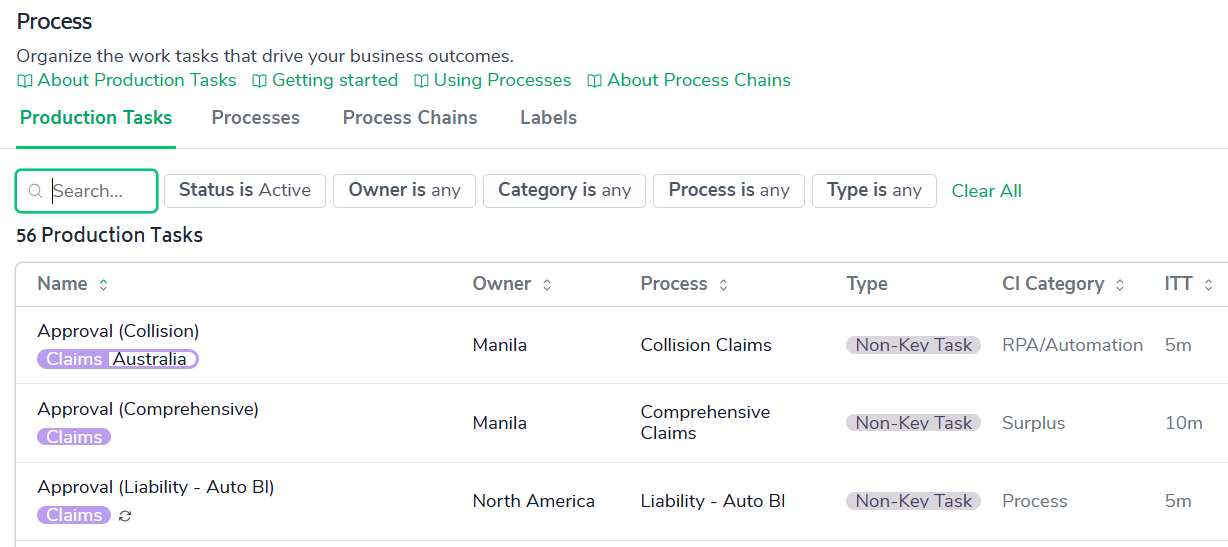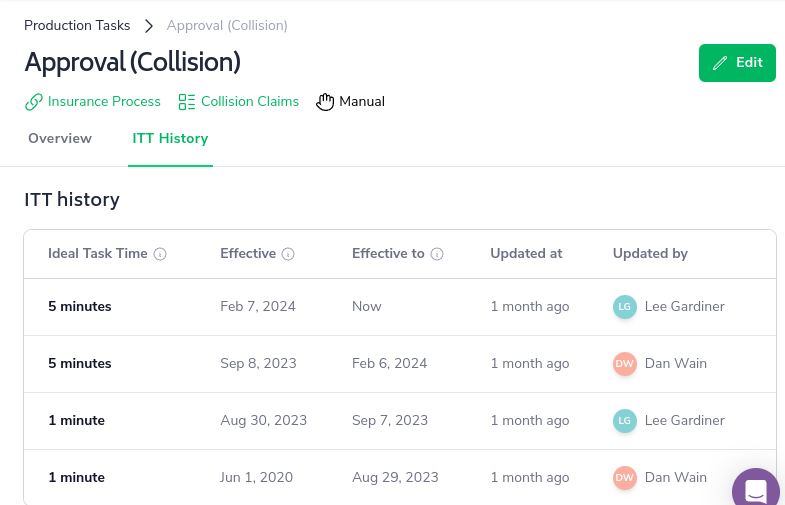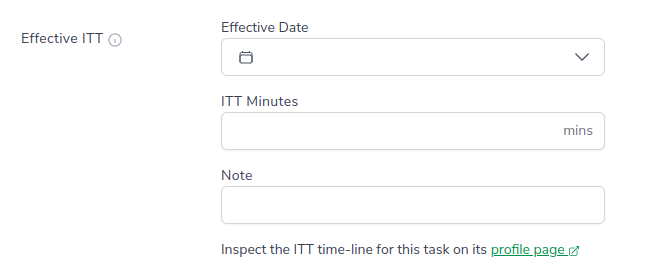Ideal Task Times (ITTs) are a requirement for Production Tasks in Bramble. They should represent the time taken on average in an ideal scenario to complete the particular Production Task.

By applying ITTs to Production Tasks, you are able to convert output from volume to hours.
Given that different teams do different tasks, by converting output into a universal metric (hours), you are able to establish recursive and universal reporting.
When establishing Ideal Task Times it's important to remove any Friction (or non Value-Add) time encountered when completing the task.
There are 3 broad approaches to setting Ideal Task Times:
Observe the task being completed by a range of Individual Contributors. This is recommended for high-volume tasks.
Using system-generated data to analyze and determine the time taken over a large dataset to complete the Task.
Estimate based on experience and feedback from Teams that complete the Task.
Finally, if observing or using system-generated data to derive the ITT, Bramble recommends using the Top-Quartile, Mean or Median as the Ideal Task Time.
Over time, as you understand how your staff work on a given task, you may want to change the ITT. This is what the Effective Date on an ITT lets you do, preserving any historic ITTs, but allowing you to change it for future work. This allows for you to allow for improvement initiatives that impact the ITTs (i.e. Automation, Process Improvement).
You can find the ITT History for a task under the task's profile page next to the Overview tab:

Click the Edit button, on the top right of the page, to open the Production Task form. Set an effective date, minutes, and a note under the Effective ITT section:

ITTs can not be deleted.
To change an ITT you must override an existing ITT by creating a new ITT with the same effective date.
ITTs are effective from the date given, up to but not including the effective date of a subsequent/later ITT, if one exist. If not, the ITT is valid into the future, effectively today's date.